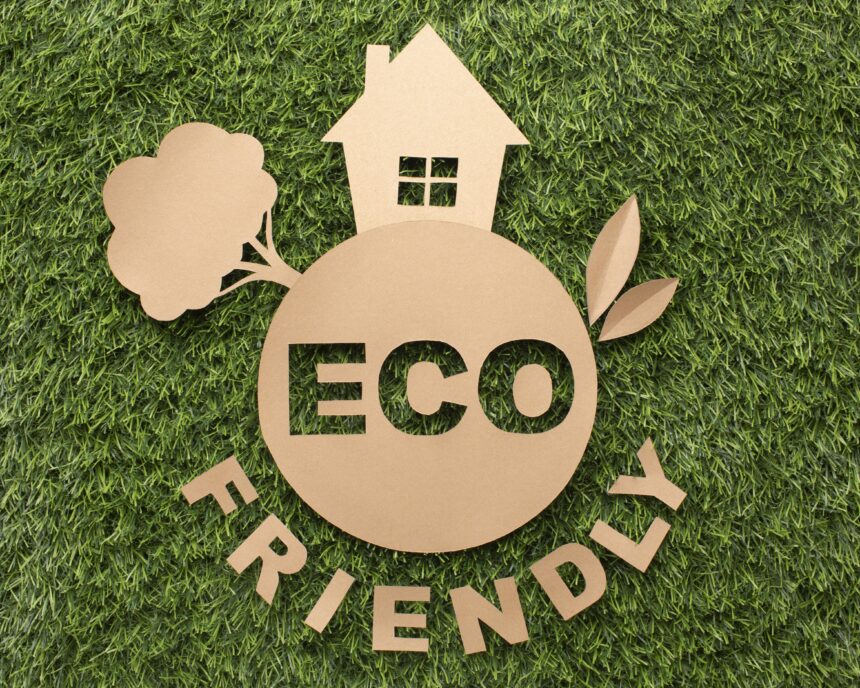Owning an eco-friendly home not only helps the environment but can also lead to potential savings on your home insurance premiums. Insurance providers often offer discounts and incentives for homeowners who take proactive measures to reduce risks and promote sustainability. If you’re looking to lower your home insurance premiums for your eco-friendly home, consider the following tips:
- Install Safety Features: Eco-friendly homes often incorporate advanced safety features that reduce the risk of damage or accidents. These can include fire-resistant materials, security systems, smoke detectors, sprinkler systems, and impact-resistant windows. By investing in such safety features, you can not only protect your home but also qualify for discounts on your insurance premiums. Contact your insurance provider to find out which safety features are eligible for discounts.
- Use Energy-Efficient Appliances: Energy-efficient appliances not only help you save on your utility bills but can also make your home more attractive to insurance providers. Energy-efficient appliances are less likely to malfunction or cause electrical issues, reducing the risk of fires or other damages. Inform your insurance provider about the energy-efficient appliances you have installed, such as ENERGY STAR-rated appliances, solar water heaters, or efficient HVAC systems, to potentially qualify for lower premiums.
- Install Security Systems: Implementing security measures not only protects your home from burglaries but can also lead to premium discounts. Install burglar alarms, security cameras, and motion-sensor lighting to enhance the security of your eco-friendly home. These systems deter criminals and reduce the likelihood of theft or vandalism. Inform your insurance provider about your security systems to explore potential discounts on your premiums.
- Utilize Green Building Materials: Eco-friendly homes often use sustainable and durable building materials that can withstand various perils, such as storms or fires. These materials can include bamboo flooring, metal roofs, or recycled insulation. Green building materials are known for their resistance to damage and can lower the risk of costly claims. Share information about the green materials used in your home’s construction with your insurance provider to potentially reduce your premiums.
- Consider Location-Based Factors: Location plays a significant role in determining insurance premiums. If your eco-friendly home is situated in an area with low crime rates, away from flood zones, or in close proximity to fire stations, it can positively impact your insurance premiums. Research the factors that insurers consider when determining rates in your area and highlight any advantages your location offers when discussing your insurance policy with providers.
- Maintain a Good Credit Score: Insurance providers often consider credit scores when determining premiums. Maintaining a good credit score indicates responsible financial behavior and suggests a lower risk profile. Pay your bills on time, keep your credit utilization low, and review your credit reports regularly to ensure accuracy. By maintaining a good credit score, you may qualify for lower home insurance premiums.
- Bundle Insurance Policies: Consider bundling your home insurance with other policies, such as auto insurance or life insurance, from the same provider. Insurance companies often offer multi-policy discounts as an incentive for bundling. It not only simplifies your insurance management but can also lead to significant savings on your premiums.
- Increase Deductibles: Increasing your deductibles can help lower your home insurance premiums. A deductible is the amount you pay out of pocket before the insurance coverage kicks in. By opting for a higher deductible, you assume more responsibility for small or moderate claims, but in turn, insurers may offer reduced premiums as a result. Assess your financial situation and determine the deductible amount that makes sense for you.
- Regularly Review Your Policy: Review your home insurance policy annually to ensure it aligns with your home’s features, changes in your lifestyle, and any updates to your eco-friendly initiatives. Inform your insurance provider about any renovations or upgrades you’ve made to your home that improve its eco-friendliness. By keeping your policy up to date, you can take advantage of potential discounts or additional coverage options that reflect the current state of your home.
- Shop Around and Compare Quotes: Finally, take the time to shop around and compare quotes from different insurance providers. Rates can vary significantly between companies, so it’s essential to obtain multiple quotes to find the best coverage at the most competitive price. Use online comparison tools or consult with insurance agents to gather quotes and compare the coverage, deductibles, and discounts offered by different providers.
In conclusion, owning an eco-friendly home opens up opportunities to lower your home insurance premiums. By implementing safety features, using energy-efficient appliances, installing security systems, utilizing green building materials, considering location-based factors, maintaining a good credit score, bundling policies, increasing deductibles, reviewing your policy regularly, and comparing quotes, you can optimize your home insurance coverage while enjoying potential cost savings. Take proactive steps to communicate the eco-friendly features of your home with your insurance provider and explore the discounts available to ensure you are benefiting fully from your sustainable lifestyle.










